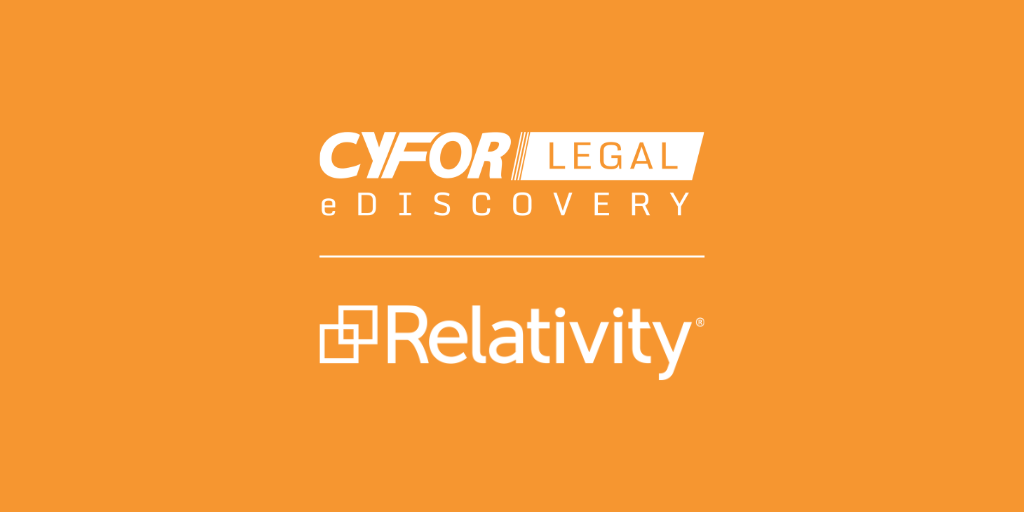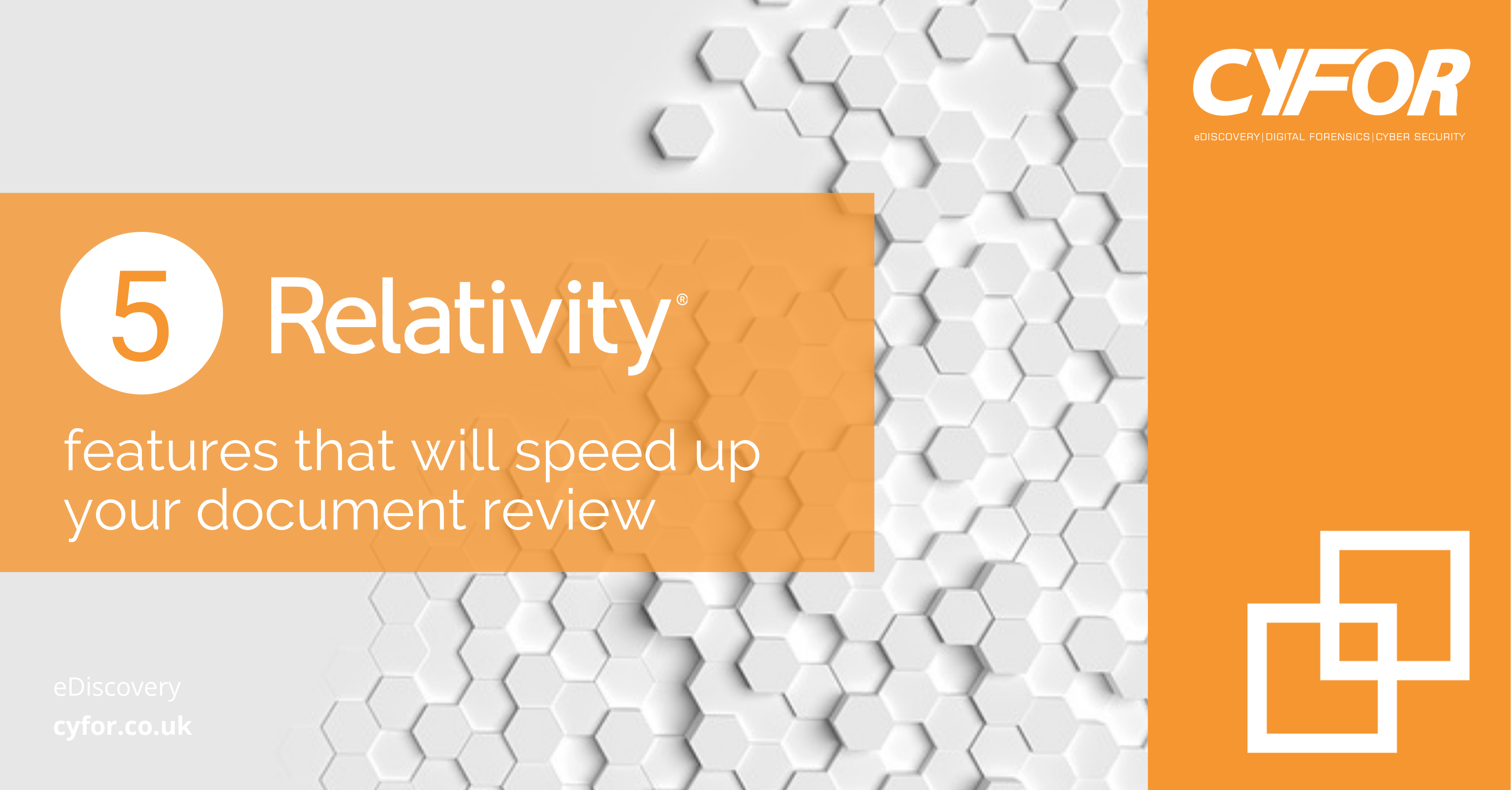5 Relativity features that will speed up your document review

5 Relativity features that will speed up your document review

Relativity features a range of tools and advanced data analytics that will speed up your document review.
When digital evidence is forensically collected, it can always seem a shock as to how much data is actually stored on devices such as mobile phones and computers. There have been numerous occasions where a client requests to review just a single computers’ worth of data and they nearly fall off their chair when you break the news that they have over 400,000 documents to review. Data amounts are only ever going to increase, which is only unfortunate for the paralegals and lawyers who have to sit and churn through hundreds of documents each day.
That said, there are some fantastic tools on the market which assist in the culling process, offering advanced features to cull your data down to the ‘hot documents’ of interest. CYFOR utilises the latest version of Relativity, a leading online review platform, which has excelled in offering a complete in-house online document review platform for eDiscovery exercises.
The five Relativity tools outlined below should all be considered should you wish to speed up your document review:
1 | Early Case Assessment
Relativity features a function in the form of the Early Case Assessment (ECA) and Investigation tool. This helps you get a thorough understanding of the overall dataset you are working with and helps determine key facts such as file types, file sizes, custodians and date ranges prior to you beginning your review. Seeing this information from the get-go can help you determine how you want to proceed with the review of the data i.e. only review certain files types, remove any documents from outside the date range of interest, identify any foreign language documents and put these aside for translation etc. Being able to cull your data down at the earliest stage of your review, means you are saving time and money by only reviewing the documents you actually need to in your main document review.
2 | Running Keywords and Date Ranges
When starting out with document review, there will be certain criteria that must be followed in order to determine what documents are of interest or not. These criteria may be documents involving certain names, places, products etc. With this said, running search terms across your data set for these specific names or phrases can ensure you are reviewing the documents you know are of interest to your case. Similarly, if you are investigating events that happened within a certain time period, applying date ranges to the data set will ensure you are only reviewing documents within the time frame, again reducing the overall data size to only the relevant period.
3 | Textual Near Duplicates
When reviewing documents, it can become extremely strenuous seeing the same documents over and over again, which is why we recommend turning Global De-duplication on when we process the data into Relativity. This said, many documents may seem to be duplicates of others, however, only slight changes mean this would not have been picked up by the processing engine as a duplicate (different MD5 hash value). For example, there may be a document that was first saved as a draft in Microsoft Word, then saved as a PDF. Relativity Processing will not identify these documents as duplicates as they are different formats even though they contain the same content. However, running textual near duplicates would identify these as containing the same text and allow us to remove one from review. These documents would be seen as 100% similar, but there are instances where even if there was a slight difference in the documents (97-98% similar) we could remove these also.
4 | Email Threading and Visualisations
When you have a large number of emails to review, it can be a vigorous task having to scroll through individual emails that are part of the same thread, which essentially means you are seeing the same emails over and over again. The ability to run email threading ensures that you are only reviewing the inclusive emails that contain all emails within a thread. The individual emails can be excluded from review, which reduces your total document count. Relativity enables the ability to visualise these email threads to identify what messages were sent, who replied, whether this was forwarded, or more importantly, whether there are any missing emails in the chain that require further investigation. Having this visualisation allows you to see the full history of an email chain from start to finish a lot easier than in previous versions. It can also be used as a quality assurance tool to check that everything in the thread has been coded or whether anything still requires review.
5 | Document Skip
It should be determined from the offset of a review, whether you want to disclose emails and attachments together. By this, I mean once you code an email as relevant, do you want the attachments to automatically be disclosed relevant too? If this is the case, Document Skip will allow you to code the email relevant, the attachments will then automatically be coded as relevant, and you will then jump to the next email. This reduces your review by removing the need to review the attachments, as these will be coded automatically. This can also be enabled for duplicate documents, so once a document is coded as relevant, any of its duplicates will be coded the same.
CYFOR’s eDiscovery team are all Relativity Certified Administrators and can provide expert advice on how best to speed up your document review. For more information please contact our us on;
+44 (0) 207 438 2045 or email contact@cyfor.co.uk
Call us today and speak with a Forensic Specialist
Send an enquiry to our experts
After submitting an enquiry, a member of our team will be in touch with you as soon as possible
Your information will only be used to contact you, and is lawfully in accordance with the General Data Protection Regulation (GDPR) act, 2018.